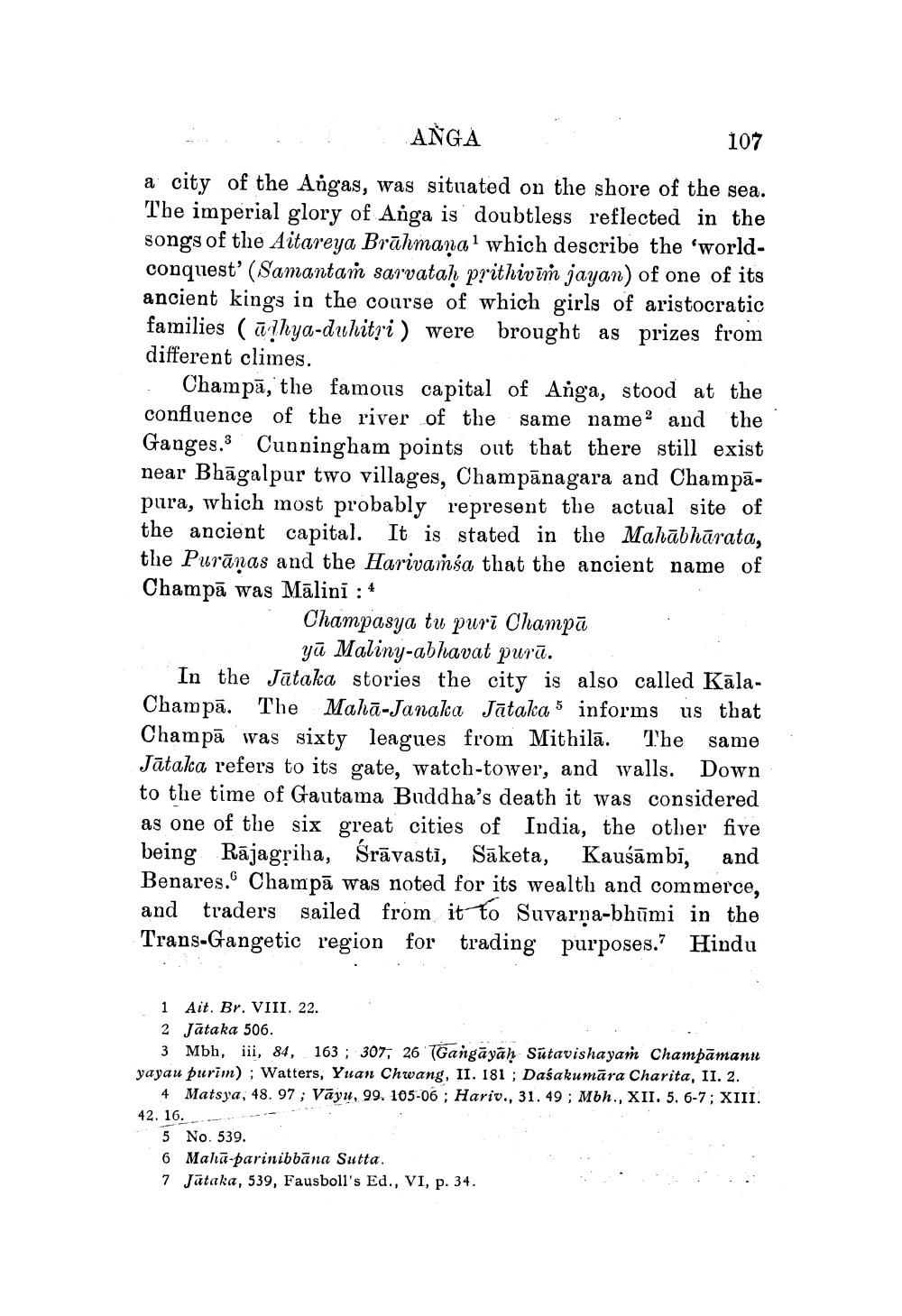________________
ANGA
107 a city of the Angas, was situated on the shore of the sea. The imperial glory of Anga is doubtless reflected in the songs of the Aitareya Brāhmaṇal which describe the 'worldconquest' (Samantam sarvatah prithivin jayan) of one of its ancient kings in the course of which girls of aristocratic families (athya-duhitri ) were brought as prizes from different climes.
Champā, the famous capital of Anga, stood at the confluence of the river of the same name and the Ganges.3 Cunningham points out that there still exist near Bhāgalpur two villages, Champānagara and Champāpura, which most probably represent the actual site of the ancient capital. It is stated in the Mahābhārata, the Purānas and the Harivassa that the ancient name of Champā was Mālini : 4
Champasya tu puri Champā
yū Maliny-abhavat purā. In the Jātaka stories the city is also called KālaChampā. The Mahā-Janaka Jātaka 5 informs us that Champā was sixty leagues from Mithilā. The same Jātaka refers to its gate, watch-tower, and walls. Down to the time of Gautama Buddha's death it was considered as one of the six great cities of India, the other five being Rājagriha, Śrāvasti, Sāketa, Kaušāmbi, and Benares. Champā was noted for its wealth and commerce, and traders sailed from it to Suvarna-bhūmi in the Trans-Gangetic region for trading purposes.? Hindu
1 Ait. Br. VIII. 22. 2 Jātaka 506.
3 Mbh, iii, 84, 163 ; 307, 26 (Gangāyāḥ Sūtavishayam Champāmanu yayau purim) : Watters, Yuan Chwang, II. 181 ; Dasakumāra Charita, II. 2.
4 Matsya, 48. 97; Vayu, 99. 105-06 : Hariv., 31. 49; Mbh., XII. 5. 6-7; XIII. 42. 16.
5 No. 539. 6 Mahā-parinibbana Sutta. 7 Jätaka, 539, Fausboll's Ed., VI, p. 34.




